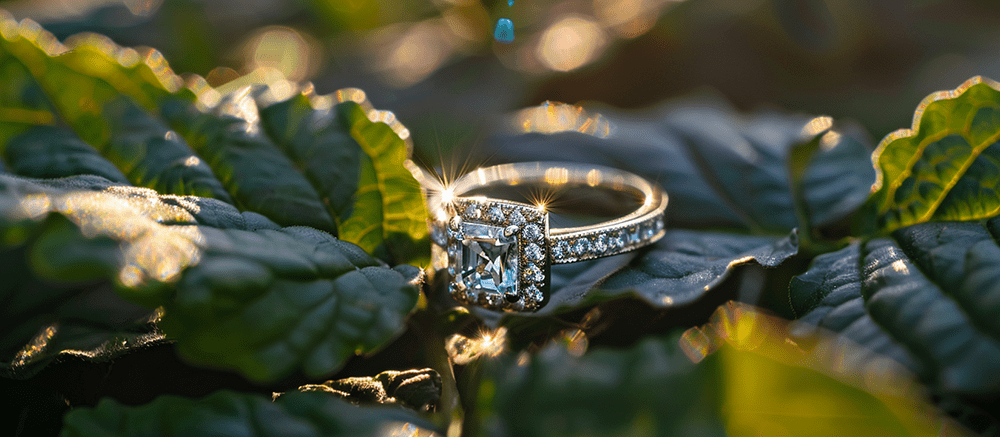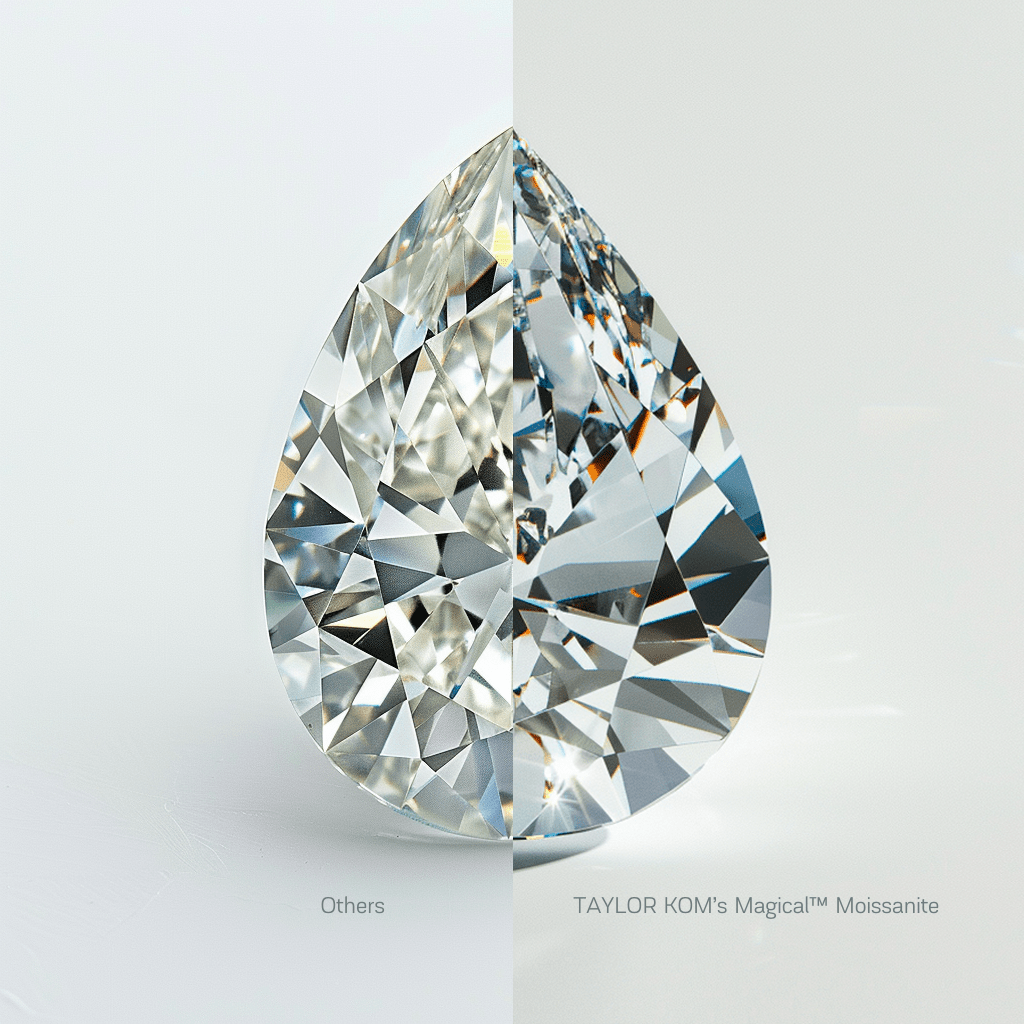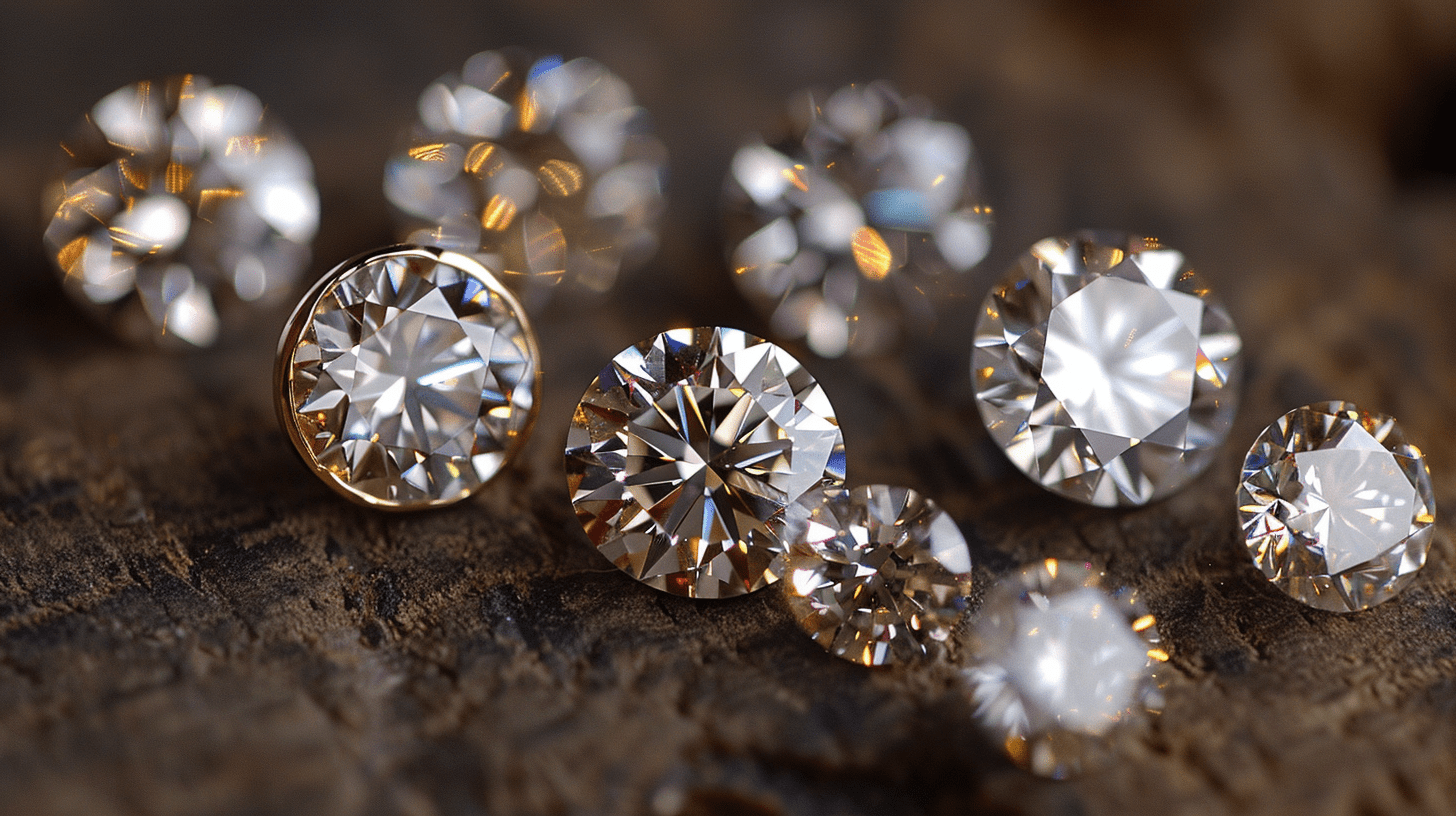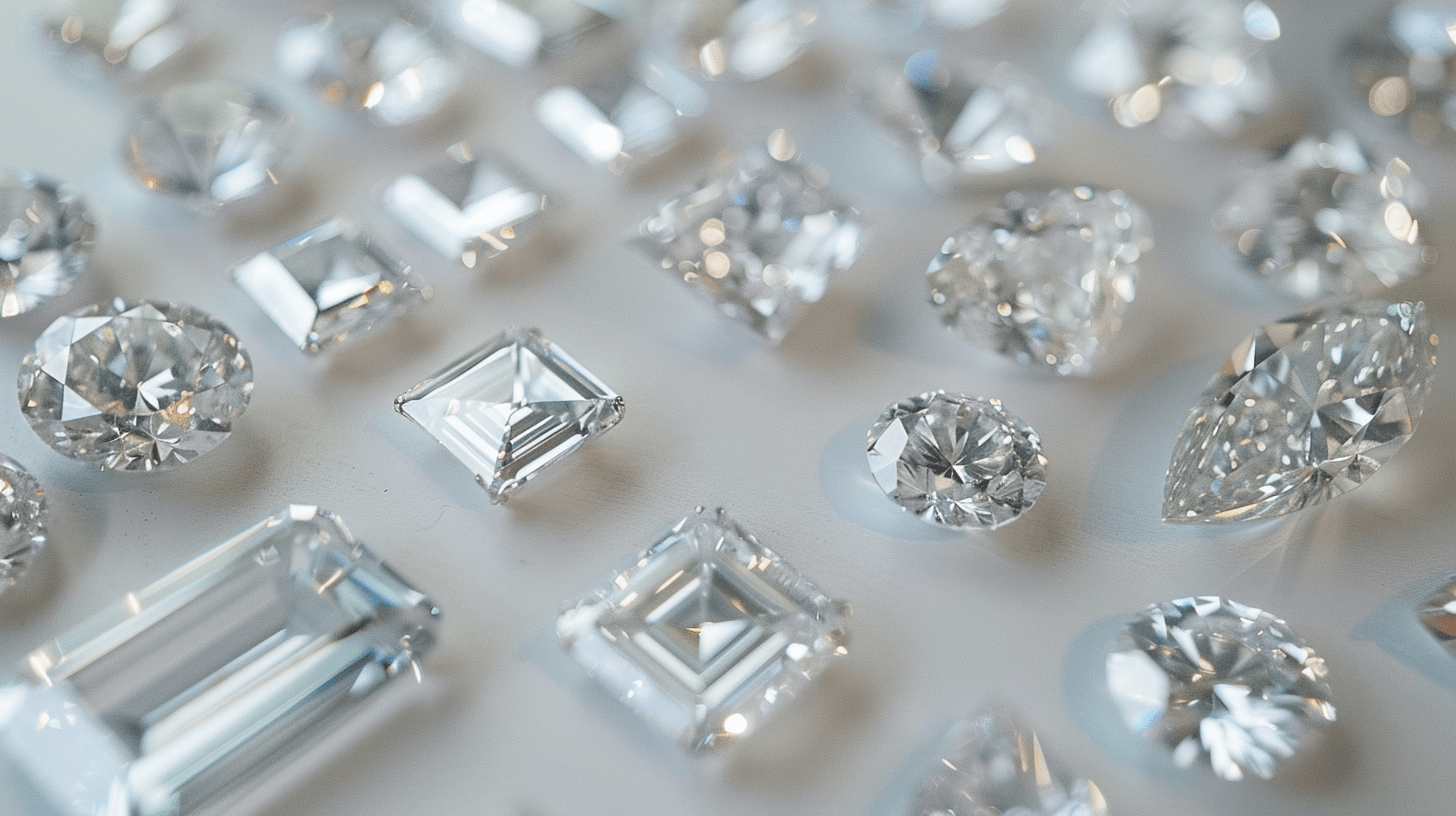Is a Moissanite Worth Buying?
1-carat moissanite is renowned for its dazzling brilliance and affordability, making it an excellent alternative to traditional diamonds. Enthralling with uncompromising radiance, moissanite captivates with its beauty, offering an economical choice for exquisite jewelry.
When it comes to purchasing beautiful gemstones for jewelry, moissanite often comes to mind as an attractive and cost-effective option. As a popular diamond alternative, moissanite boasts exceptional luster and durability, making it the ideal choice for those seeking both beauty and value. One of the factors contributing to the allure of moissanite is its price, which is typically more budget-friendly compared to similar diamonds.
How Are Moissanites Graded?
Grade
Description
Excellent
Outstanding brilliance and fire, very few flaws
Very Good
High brilliance and fire, tiny flaws only visible under magnification
Good
Noticeable brilliance and fire, some flaws visible to the naked eye
Fair
Moderate brilliance and fire, flaws visible without magnification
Poor
Low brilliance and fire, obvious defects visible to the naked eye
When discussing moissanite, understanding its grading system is crucial, especially when comparing it to diamonds. Like diamonds, moissanite is categorized based on a combination of size (measured in millimeters), carat weight, as well as color, clarity, and cut grades.
Like any gemstone, the size of moissanite is typically measured in millimeters (mm), with weight measured in carats. Carat weight is often used to indicate the size of a gemstone, with 1 carat equaling 200 milligrams. Moissanite can range in weight from 1 carat to 3 carats or more, with heavier carats commanding higher prices.
The color grading of moissanite is based on a scale similar to that of diamonds, although it's important to note that due to differences in grading methods, moissanite color grades do not directly correlate to the D-to-Z (colorless) diamond color grades. moissanite exhibits unique color and rainbow-like reflective effects, highly coveted and contributing to its distinct appearance. Color grades for moissanite typically range from E to J, with E, F, and G being the most popular tones due to their near-colorless appearance. Similar to natural or lab-created diamond color grading systems, the more colorless the gemstone, the higher the grade and price.
Clarity grading for moissanite follows a pattern similar to diamonds, with fewer inclusions indicating higher clarity. Better transparency results in stronger sparkle and light performance. Gemologists use various technical terms to refer to these flaws and inclusions, including blemishes and inclusions. Since these flaws are often microscopic, they typically do not affect the beauty of the moissanite in any noticeable way.
Finally, cut grade plays a crucial role in the overall aesthetics and brilliance of moissanite. Ideal cut proportions must be met depending on the shape of the moissanite. Cut grades range from "Fair" to "Excellent." The brighter the gemstone, the higher the cut grade rating. Examples of popular cuts include round, princess, cushion, and emerald. Each cut is designed to maximize the return of light to the viewer's eye, creating the stunning fire and brilliance unique to moissanite.
In conclusion, understanding the grading of moissanite in terms of size, carat weight, color, clarity, and cut will help make the best choice for your jewelry needs. By considering these factors, you can confidently select a gemstone that suits your preferences and showcases the true beauty of moissanite.
How Much Does Moissanite Cost?
So, what is the price of moissanite rings? Affordability becomes a key factor when purchasing gemstones. We know that many are seeking options that are both aesthetically pleasing, durable, and won't break the bank. moissanite presents an excellent choice; it's a superb alternative to natural diamonds without compromising on quality or appearance.
The cost of 1-carat moissanite varies depending on the quality and cut of the gemstone, but it's much cheaper than a natural diamond of the same size. The price of moissanite typically ranges from around $200 to $600 per carat, with prices increasing for heavier carats.
In contrast, the price of a 1-carat natural diamond can range from a few thousand dollars to tens of thousands of dollars, depending on factors such as cut, color, clarity, and carat weight. By choosing moissanite, people can enjoy significant savings without sacrificing the beauty and quality they expect from their jewelry.
When considering the cost of moissanite versus diamonds, it's important to remember that both options have unique qualities and characteristics. moissanite is renowned for its incredible brilliance, durability, and scratch resistance, making it a popular choice for engagement rings and other fine jewelry. In fact, moissanite has a higher refractive index, resulting in more fire and brilliance than natural diamonds, making it a more attractive option for those seeking stunning gemstones.
Frequently Asked Questions
How does the price of moissanite compare to diamonds?
Moissanite is much cheaper than diamonds. The price of moissanite rings is typically around 10% of similar rings featuring natural diamonds. This cost difference is mainly because moissanite is lab-created, while diamonds are naturally occurring and more difficult to obtain.
What factors affect the price of a 1-carat moissanite?
The cost of a 1-carat moissanite may be influenced by factors such as gemstone cut, clarity, and color. Higher quality moissanite with good cuts and near-colorless appearance usually commands a higher price than lower quality stones with poor cuts or noticeable yellow coloration.
How do you calculate the value of moissanite?
To calculate the value of moissanite, consider its carat weight, cut quality, color, and clarity. Carat weight measures the size of the gemstone, while cut, color, and clarity grades provide insights into the overall quality and appearance of the gemstone. Higher grades in these categories typically command higher prices.
Are larger carat moissanites more expensive?
Yes, larger carat-sized moissanites tend to be more expensive. Similar to diamonds, the price of moissanite increases with higher carat weights. However, the price difference between larger and smaller moissanites is usually not as significant as with diamonds, where prices exponentially increase with carat weight.
What is the price range for a 1-carat Moissanite ring?
The price range for a 1-carat moissanite ring can vary greatly depending on factors such as the quality of the gemstone, type of setting, and material of the ring. However, generally speaking, the price of a 1-carat moissanite ring falls between $200 to $1500.
Do different grades of moissanite have different prices?
Yes, different grades of moissanite can indeed have different prices. The grading standards for moissanite are typically similar to diamonds, where qualities such as cut, color, and clarity impact the overall grade and thus the price. Higher-grade moissanite stones tend to be more expensive, while lower-grade stones are cheaper.



